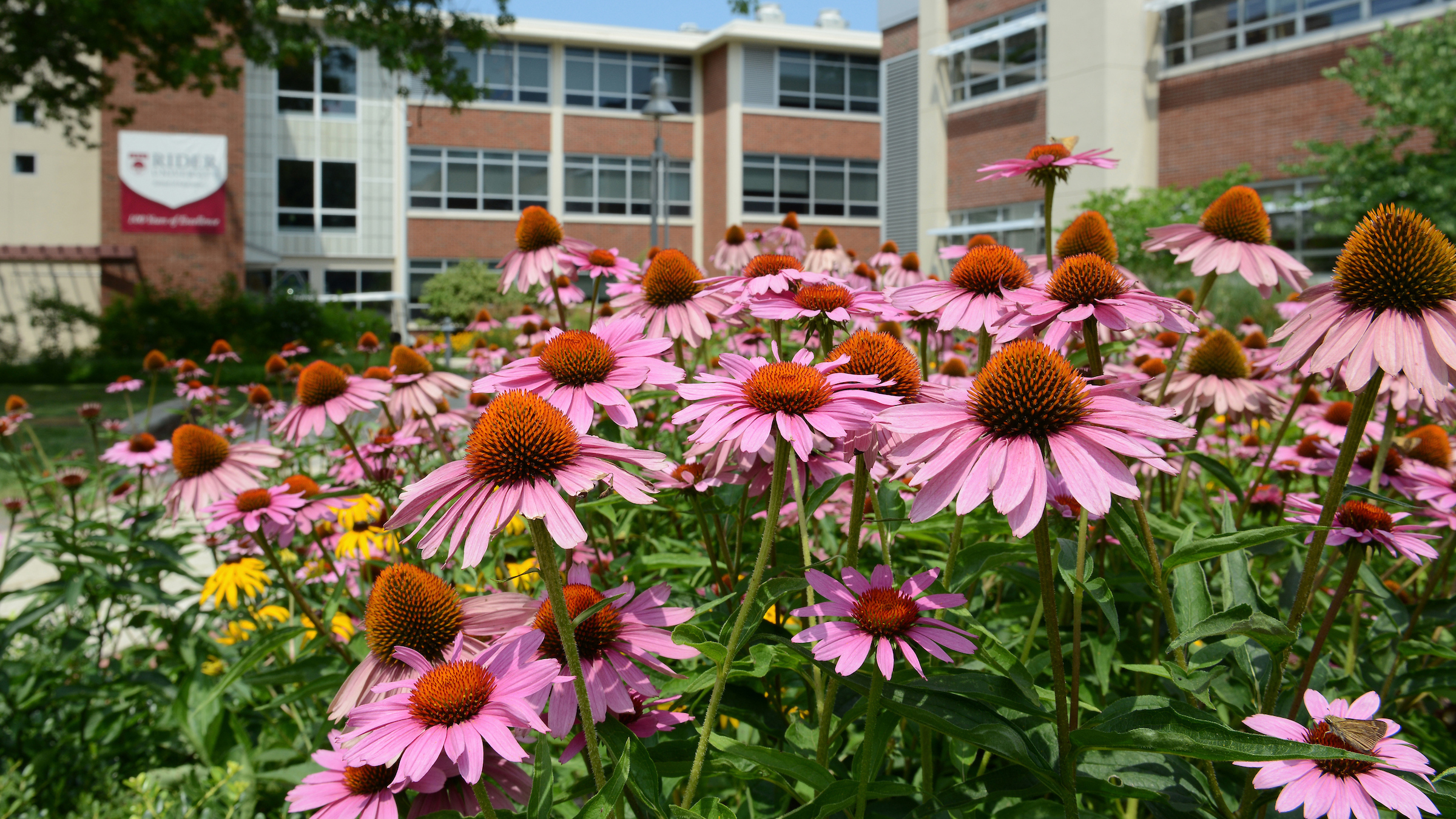Friday, May 4, 2018
67 percent of the University's annual electricity use is green
by Rachel Stengel '14
The U.S. Environmental Protection Agency (EPA) recognized Rider University as a Conference Champion in the 2017-18 College and University Green Power Challenge. Rider currently uses more green power than any other school in the Metro Atlantic Athletic Conference.
Rider uses nearly 14 million kilowatt-hours (kWh) of green power, representing 67 percent of the its annual electricity use. This commitment to green power demonstrates a sustainable choice that helps reduce the negative health impacts of air emissions.
"We are thrilled to be recognized for our commitment to using green energy," says Melissa Greenberg, sustainability manager. "Rider undertakes a wide variety of initiatives to ensure our campus is an eco-friendly environment. Not only are we 'greening' our operations in many areas, but we have a desire to educate as many Rider students and community members as possible about their role as global citizens."
Sustainability initiatives include purchasing Renewable Energy Credits that allow Rider to offset its energy use by natural wind energy; the installation of a Tri-Generation Energy Plant, which has decreased the amount of purchased electricity from an off-campus provider and lowered greenhouse gas emissions; and designing LEED-certified buildings, among others.
Since April 2006, the EPA’s Green Power Partnership has tracked and recognized the collegiate athletic conferences with the highest combined green power use within the program. The Conference Champion Award recognizes the school that uses the most green power in a qualifying conference.
This was the second recognition of the University's sustainability efforts in as many months. In April, Rider received a mark of distinction for its progress on becoming carbon neutral by 2050.
The Green Power Partnership is a voluntary program that helps increase green power use among U.S. organizations. It works to increase the development of green power sources to reduce air pollution and other environmental impacts associated with electricity use. The Partnership currently has more than 1,600 partners voluntarily using more than 48 billion kilowatt-hours of green power annually.

